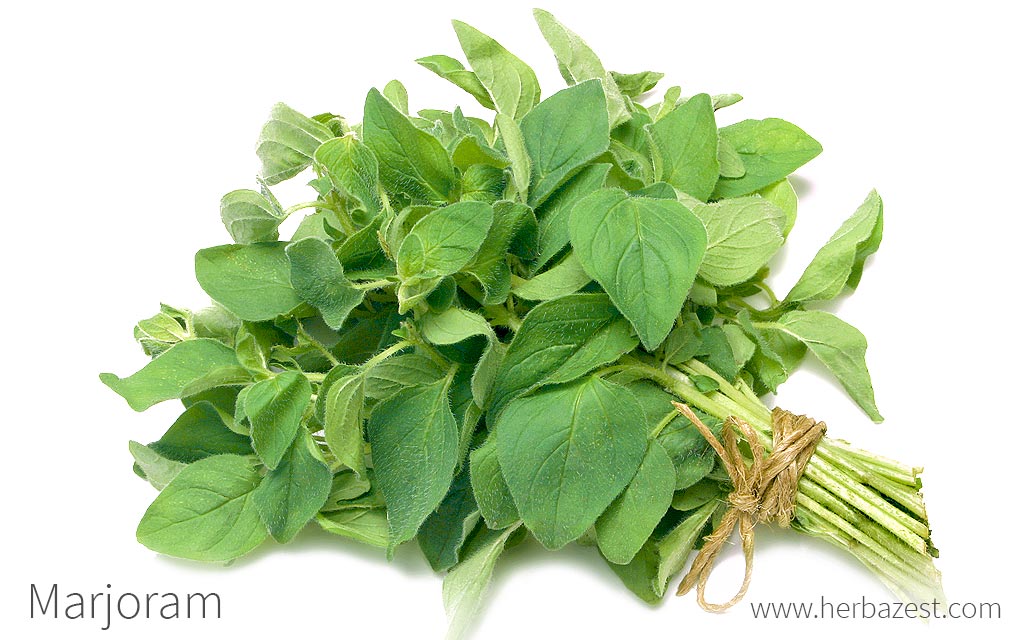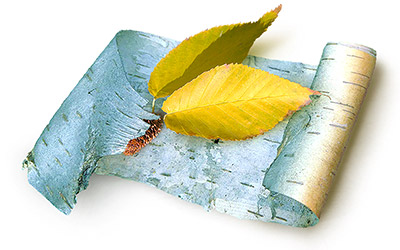Marjoram, or sweet marjoram, is an aromatic perennial native to Cyprus, in the eastern side of the Mediterranean region, which has been naturalized all over the world. While it is widely popular as a seasoning for several different types of dishes, marjoram is also considered as a valuable medicinal herb and used since ancient times to treat a variety of health conditions.
Marjoram Medicinal Properties
- Medicinal action Antimicrobial, Carminative
- Key constituents Flavonoids, terpenoids
- Ways to use Capsules, Hot infusions/tisanes, Freshly ground, Tincture, Essential oil, Dried
- Medicinal rating (1) Very minor uses
- Safety ranking Safety undetermined
Health Benefits of Marjoram
Marjoram herb has a long history of medicinal uses, and its therapeutic applications are still popular today. Scientific studies have been carried out in order to understand its mechanisms of action and validate its traditional uses. Marjoram benefits have shown to be effective mainly for:
Soothing digestive problems. Marjoram can be used to help treat cramps, gas, and even long-term digestive upset.
Sanitizing wounds. Because marjoram is antimicrobial, it can be used to keep wounds from becoming infected.
How It Works
The mechanism that allows marjoram to soothe digestive ailments has not yet been identified; however, the flavonoids in marjoram have shown a strong inhibitory activity over digestive enzymes, helping decrease glucose absorption and reducing blood glucose concentration after meals.
Marjoram's antioxidant compounds have also been proven effective in the treatment of gastrointestinal disorders, such as chronic gastritis caused by Helicobacter pylori.
The antimicrobial properties of the plant are still under investigation. However, preliminary studies have shown that linalool and terpinen-4-ol, two major terpenes in sweet marjoram essential oil, effectively inhibit the presence of some strains of yeast, mold, and bacteria.
Other herbs that are great for relieving digestive complains are cinnamon, bay laurel, and peppermint, whereas antimicrobial properties can be found in garlic, calendula, and thyme.
Marjoram Side Effects
Marjoram is likely safe in normal food amounts, but its effects in medicinal doses have not been fully assessed. It is likely to be unsafe when used for extended periods of time. Moreover, fresh marjoram can cause cause skin irritation in sensitive individuals when applied topically, especially near the eyes.
Marjoram Cautions
Marjoram may interact with lithium, so it should not be used in conjunction with this drug. The herb is also considered unsafe for those with preexisting health conditions, such as bleeding disorders, slow heart rate, diabetes, gastrointestinal tract blockage, ulcers, lung conditions, seizures, or urinary tracts obstructions.
Marjoram may cause allergic reactions, including rash or difficulty breathing, in those who are sensitive to basil, hyssop, lavender, mint, oregano, or sage.
Marjoram should not be consumed before surgery as its anticoagulant action may increase risk of bleeding. Likewise, it should not be taken in medicinal doses by children and women who are pregnant or breastfeeding.

How to Consume Marjoram
- Edible parts Leaves
- Edible uses Flavoring
Arguably, the most popular of marjoram uses is as a seasoning ingredient in food, but it is also commonly found in a variety of herbal remedies, which are more likely to provide the amounts of active compounds needed to experience marjoram's health benefits.
The marjoram spice is generally used as a seasoning and is not eaten alone or as a main ingredient. It is commonly added to soups and sauces, such as salad dressings or marinades for meat or fish.
Natural Forms
Raw. The fresh marjoram leaves can be sprinkled over salads or beverages in order to reap their flavor and carminative effects.
Powder. Dried marjoram leaves are ground in order to obtain a fine powder that is commonly used as a culinary spice.
Infusion. The fresh or dried marjoram leaves can be brewed into a warm infusion that is mainly used to improve digestion.
Herbal Remedies & Supplements
Tincture. This concentrated form of marjoram is useful for soothing digestive upset, and it can also be applied to skin rashes or wounds in order to prevent infections.
Essential oil. The essential oil of the marjoram plant is not meant to be ingested. When applied externally, it helps prevent infections in small wounds.
Capsules. For longer-term digestive problems, capsules can help to aid digestion and eliminate the problems that occur in the stomach and the rest of the digestive tract.

Growing
- Life cycle Perennial
- Harvested parts Leaves
- Light requirements Full sun, Morning sun with afternoon shade, Partial shade
- Soil Loamy sand, Well-drained
- Soil pH 5.1 – 5.5 (Strongly acidic), 5.6 – 6.0 (Moderately acidic), 6.1 – 6.5 (Slightly acidic), 6.6 – 7.3 (Neutral), 7.4 – 7.8 (Slightly alkaline), 7.9 – 8.4 (Moderately alkaline)
- Growing habitat Warm climates
- USDA Plant Hardiness Zones 9a, 9b, 10a, 10b
- Planting time Spring
- Plant spacing average 0.25 m (0.82 ft)
- Propagation techniques Cuttings, Layering, Divisions
- Potential insect pests Aphids, Mites, Cutworms
- Potential diseases Rust
Marjoram herb is similar in appearance and growing requirements to its better-known relative, oregano. However, there are a few differences between the two herbs when it comes to growing requirements.
Growing Guidelines
Marjoram can be propagated by seeds, cuttings, layerings, or root divisions.
Marjoram can be grown in U.S. hardiness zones 9 - 10, and its ideal growing temperature is 43 - 82°F (6 - 27°C).
The best soil for marjoram herb is a fertile, well-drained, and loamy sand.
Marjoram can grow in a wide range of soils with a pH of 5.0 - 8.5.
The best spot for marjoram is a place with full sun to partial shade.
Seeds should be spaced 8 - 10 inches (20 - 25 cm) apart in rows one foot (30 cm) apart.
Aphids, cutworms, and spider mites are insects that may damage the marjoram plant.
A common disease that attacks marjoram herb is a fungus called rust.
More detailed information about growing marjoram can be found in the herb garden.
Additional Information
- Other uses Perfume, Soapmaking
Plant Biology
Marjoram is a perennial herb native to the Mediterranean region. It can grow up to 10 - 12 inches (25 - 30 cm) tall and usually reaches a spread of approximately 10 inches (25 cm). It has a shallow root system, and its stem is square and grows small gray hairs. Its leaves are pale green, elliptical, and grow up to one inch (2.5 cm) long.
Marjoram may also be referred to as sweet marjoram to distinguish it from other types of marjoram.
- Classification
The scientific name for marjoram is Origanum majorana, and it belongs to the Lamiaceae botanical group, also known as the mint family, which includes 200 genera and 7,200 species spread all over the world. There are several aromatic herbs in this large family, many of them of culinary importance, such as basil (Ocimum basilicum), muña (Minthostachys mollis), spearmint (Mentha spicata), sage (Salvia officinalis), and oregano (Origanum vulgare).
- Related Species and Varieties of Marjoram
The genus Origanum comprises over 44 species and includes several types of oregano as well as marjoram (Origanum majorana) and dittany of Crete (Origanum dictamnus).
Origanum majorana is related to wild marjoram, better known as oregano (Origanum vulgare), which grows in the Mediterranean region as well, although it has been found as far north as England and is now naturalized in the United States. There are several other varieties of marjoram, most of which are referred to by the same name: pot marjoram. These species may be wild or cultivated, but they are not as strong a seasoning herb as sweet marjoram.
Historical Information
Marjoram is native to the Mediterranean region, including southern Europe, northern Africa, and parts of Asia. It was used as a medicinal herb during the Middle Ages in the locations where it grows naturally, and it began to be used as a seasoning in the 16th century, mainly in Europe. It is still widely popular, both as a culinary herb and as an herbal remedy.
Economic Data
Marjoram is economically important as an export and import crop for certain countries. Egypt is the main producer of marjoram, and in 2010 it produced 3,300 metric tons of the herb. European countries are the main importers of marjoram spice; they import approximately 65% of the world's production of marjoram, which makes it the most popularly imported herb in Europe.
Popular Beliefs
Ancient Greeks believed that marjoram had been given its scent by the Greek goddess Aphrodite, who wanted to symbolize happiness with its sweetness. For this reason, it was common for Greek brides - and later, Roman brides as well - to wear crowns made from marjoram on their wedding days.
Increased longevity has also been attributed to the this aromatic herb, and it was grown on gravesites with the purpose of bringing comfort to the souls of the dead ones. It was also believed that applying marjoram oil at bedtime would bring dreams about the future.
Other Uses
Cosmetics. Marjoram's essential oil can be added to perfumes and soaps for its popular scent, but it is not a common ingredient in either one.
Aromatherapy. Dried marjoram leaves may also be used in scented aromatherapy products, such as candles and potpourri.
Marjoram is an aromatic herb, popular for both its taste and its use as an herbal remedy. Its carminative and antimicrobial properties make it especially useful as a healing herb.
Sources
- Aromatherapy: Essential Oils for Vibrant Health and Beauty, pp. 91 - 92
- Bioscience, Biotechnology, and Biochemistry, 6-Hydroxyflavonoids as a-Glucosidase Inhibitors from Marjoram (Origanum majorana) Leaves, 2003
- Cultivation of Medicinal and Aromatic Crops, pp. 553 - 557
- Food Research International, Essential oil composition and antimicrobial activity of Origanum majorana L. extracts obtained with ethyl alcohol and supercritical carbon dioxide, 2005
- Handbook of Herbs and Spices, pp. 216 - 237
- Indian Journal of Natural Products and Resources, Origanum majorana L. - Ph
- Journal of Essential Oil Research, Chemical Composition and Antimicrobial Activities of Two Aromatic Plants: Origanum majorana L. and O. compactum Benth, 1996
- Penn State College of Agricultural Sciences, Marjoram
- Plant Village, Marjoram
- Purdue University, Origanum spp.
- University of Hawaii, College of Tropical Agriculture and Human Recourses, Specialty and Minor Crops Hanbooks: Marjoram, Sweet Marjoram, Knot Marjoram
- World Spice Congress, Herbs Market Report 2012
- Phytotherapy Research, In Vitro susceptibility of Helicobacter pylori to botanical extracts used traditionally for the treatment of gastrointestinal disorders, 2005






